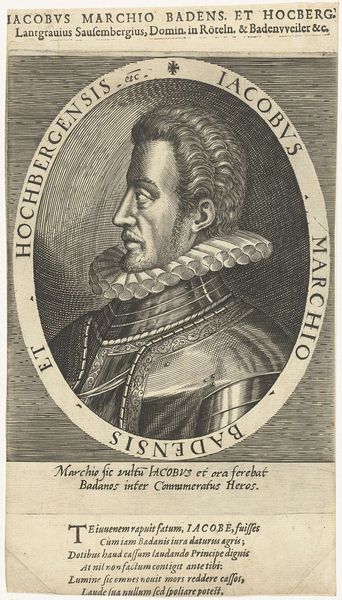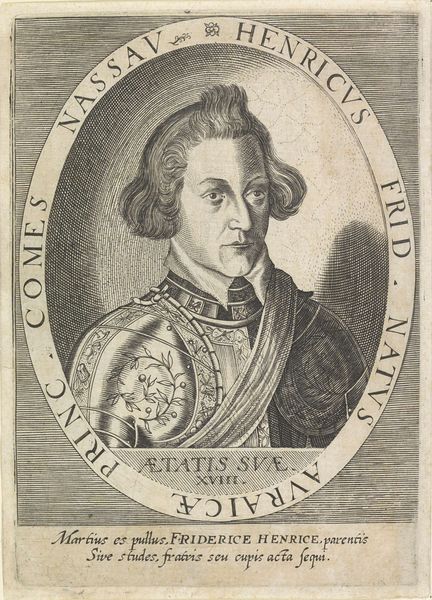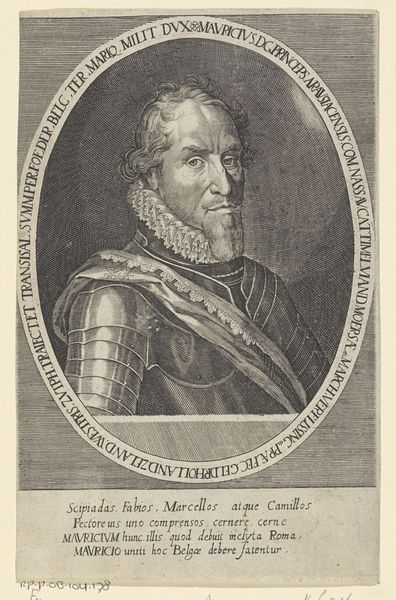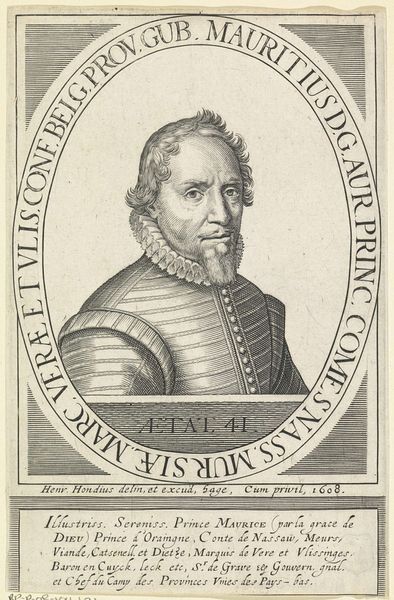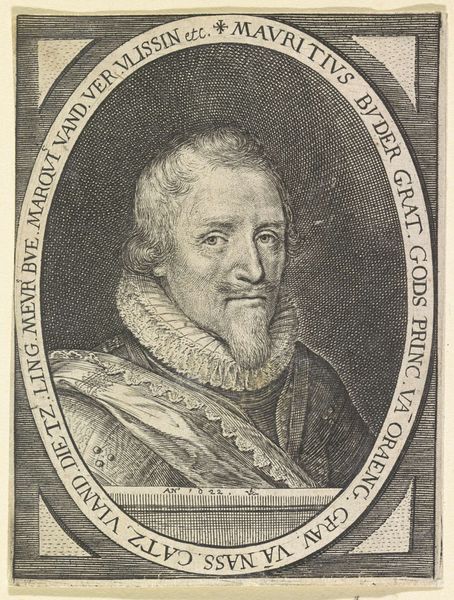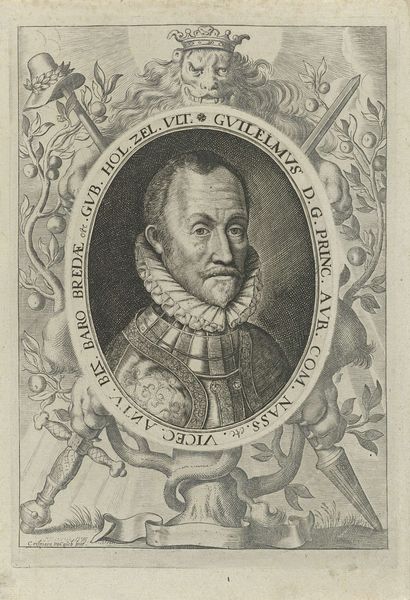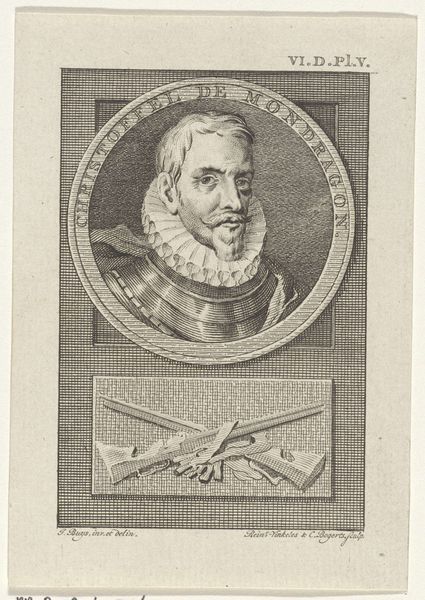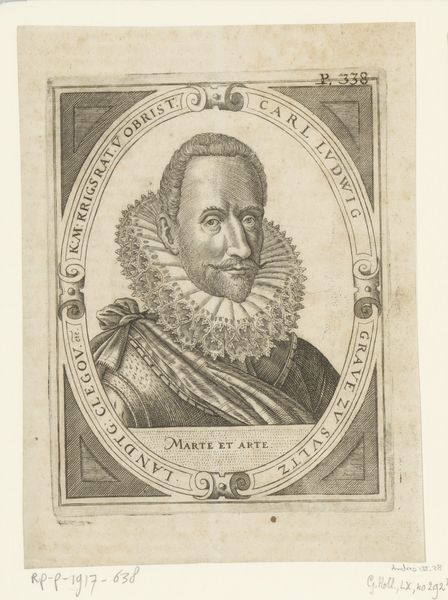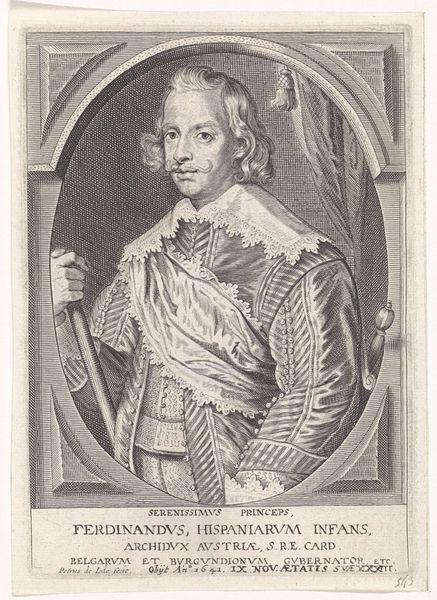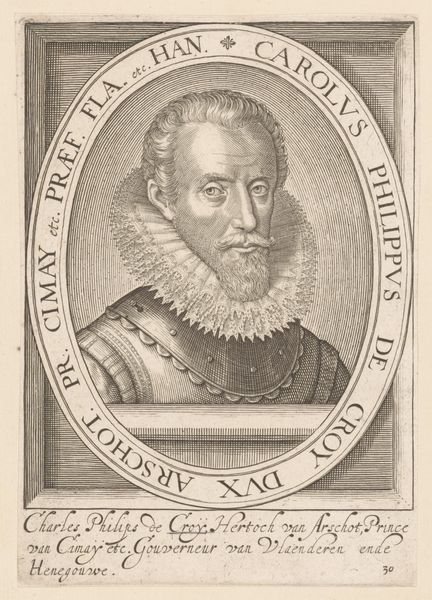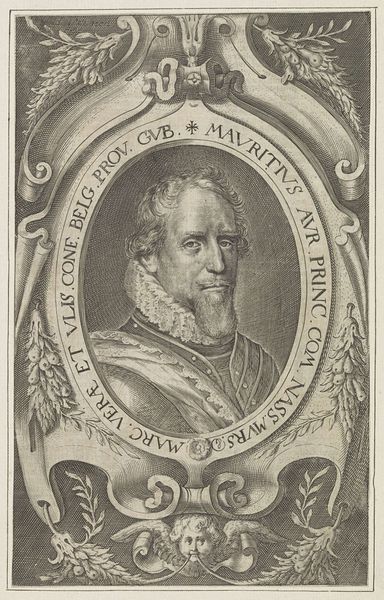
print, engraving
#
portrait
#
aged paper
# print
#
old engraving style
#
11_renaissance
#
old-timey
#
19th century
#
engraving
Dimensions: height 234 mm, width 143 mm
Copyright: Rijks Museum: Open Domain
Curator: Before us is "Portret van Ernst Frederik van Baden," a compelling engraving crafted between 1600 and 1604 by Dominicus Custos. Currently residing at the Rijksmuseum, it offers a glimpse into the persona of a nobleman from a bygone era. Editor: Oh, there’s something terribly austere and distant about this rendering. The stark black lines create this almost rigid profile – a man encased in status. Curator: The artistry in printmaking truly amazes me. To capture the sheen of armor, the delicate ruffles, all through etched lines...it speaks to a meticulous, laborious process, doesn't it? We often overlook the sheer manual effort behind these seemingly simple images, the individual choices Custos made to render texture and form. Editor: Absolutely. Look at the way the hatching defines the metallic surface. The whole print, including that dense text, had to come off a press somehow – and the uniformity suggests real expertise at controlling all those material conditions to guarantee consistent quality over multiple pulls of an image. Curator: And it makes you consider Ernst Frederik himself. Was he truly as unsmiling as he appears? Or is this an idealized, almost stoic, representation intended to project power and stability during a turbulent period? The lines around his mouth hint at a more complex character, perhaps. Editor: Precisely! This image flattens all these intricacies, though. Think about the economics: the costs to acquire suitable metals for the plate, skilled labor to do the engraving. The end result becomes something bought and sold like any other commodity, regardless of representing some “high-born” noble, further distancing him from daily toil. Curator: Yes, but art also serves as an amazing mirror reflecting not only the person but also the socio-political landscape. It hints at family history, connections... Editor: Still, I tend to appreciate images most where some part of the material process breaks into view, interrupting that seamless illusion of depth. Like where we can observe imperfections on aged paper showing its tangible character! That reminds me we're looking at crafted objects that undergo natural degradation too. Curator: Indeed, a work where material speaks for itself is an open text waiting for dialogue with generations to come, like a whispered legacy from hands to souls… Editor: Perhaps artful making ultimately lies less in timeless perfection than imperfectly negotiating what you start with and knowing what to expect. It all comes out finally by just watching these slow processes work, you know?
Comments
No comments
Be the first to comment and join the conversation on the ultimate creative platform.

